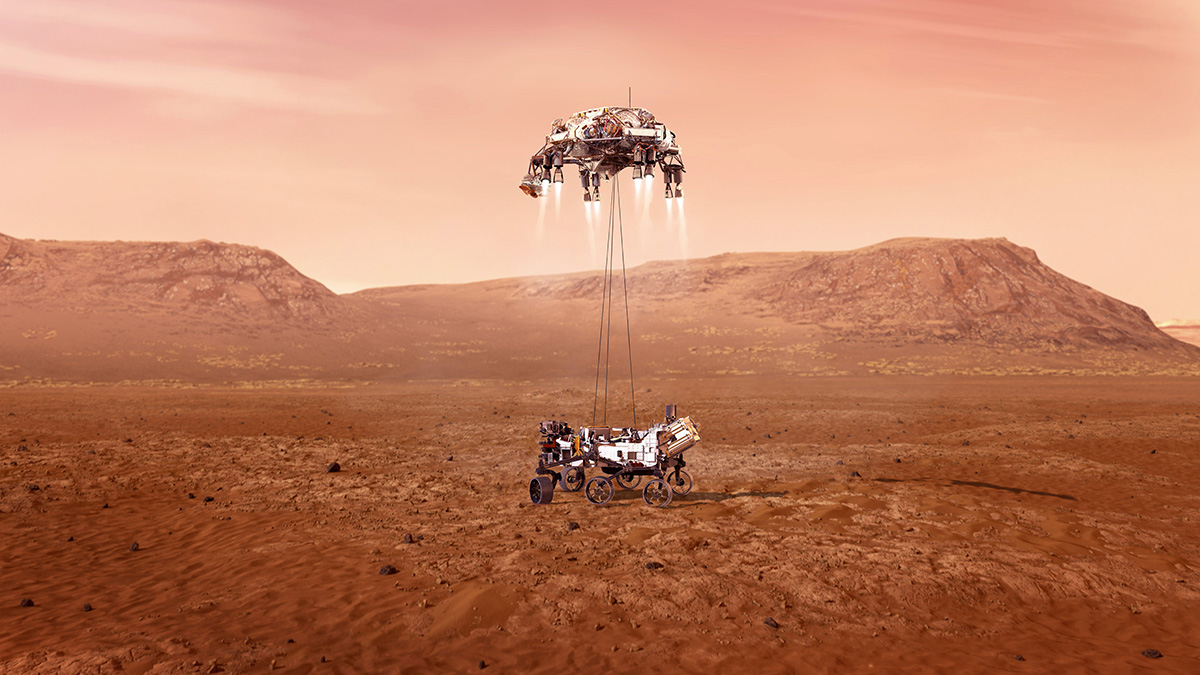The curiosity to find proof of life on Mars will once again take NASA’s new rover to the red planet on February 18, 2021. The landing of the Mars Rover — often termed as “seven minutes of terror” — will truly define the success or the failure of the mission.
ISRO Releases Initial Data From Chandrayaan-2, Says All Experiments Performing Well
Perseverance, as the new rover is called, has been named by a middle-school child who won NASA’s ‘Name the Rover’ essay contest. It will land on Mars to seek signs of ancient microbial life and collect samples of rock and regolith (broken rock and soil) and bring them back to Earth.
The rover was launched on July 30, 2020, from Cape Canaveral Air Force Station, Florida. NASA has released a small animated video of the rover landing on Mars.
Goosebumps deployed. Our @NASAPersevere rover is less than two months away from landing on Mars. Are you ready for February 18, 2021? https://t.co/ipfQWXoBJQ#CountdownToMars pic.twitter.com/F3p2RWyhn8
— NASA (@NASA) December 23, 2020
During those crucial seven minutes, the rover will enter the planet’s atmosphere, descend, and land. It will make several maneuvers directed by the automated computer on board before making a soft landing in the 28 miles wide (45 kilometers wide) Jezero Crate on the north of the Martian equator.
When the rover plunges through the thin Martian atmosphere at a speed of over 12,000 mph (about 20,000 kph), its heat shield will have to endure temperatures as high as 2,100C (3,800F). A parachute and powered descent slow the rover down to about 2 mph (three-fourths of a meter per second). A large sky crane then lowers the rover on three bridle cords to land softly on six wheels.

The whole process of entry, descent, and landing is about seven minutes long. The planned operational life for the Perseverance rover is one Martian year on the surface. One Martian year is 687 Earth days or 669 sols (a sol is a Martian day, which is 24 hours, 39 minutes, 35.244 seconds).
The rover’s astrobiology mission will search for signs of ancient microbial life, characterize the planet’s climate and geology and collect samples for a future return to Earth. Perseverance will also gather knowledge about, and demonstrate the viability of, technologies that address the challenges of future human expeditions to Mars.
Interestingly, it takes about 10.5 minutes for the radio signal to travel from Mars to the Earth, which is longer than the time for the rover to make a landing starting from when it enters the planet’s atmosphere. This means that by the time the rover completes the landing process successfully or not, the only signal reaching the earth would be that it has entered the atmosphere of Mars.
Perseverance will be the fifth rover NASA has sent to Mars. Each of these rovers has carried cameras or other instruments to study the Martian surface. As opposed to stationary landers, like InSight or Phoenix, rovers can drive into craters, up slopes, and along sand dunes, allowing scientists and engineers to explore the planet. All of NASA’s Mars rovers have been built at the agency’s Jet Propulsion Laboratory.
About $2.4 billion has been invested to build and launch the Mars 2020 Perseverance mission. The estimated cost to land and operate the rover during its prime mission is approximately $300 million.





